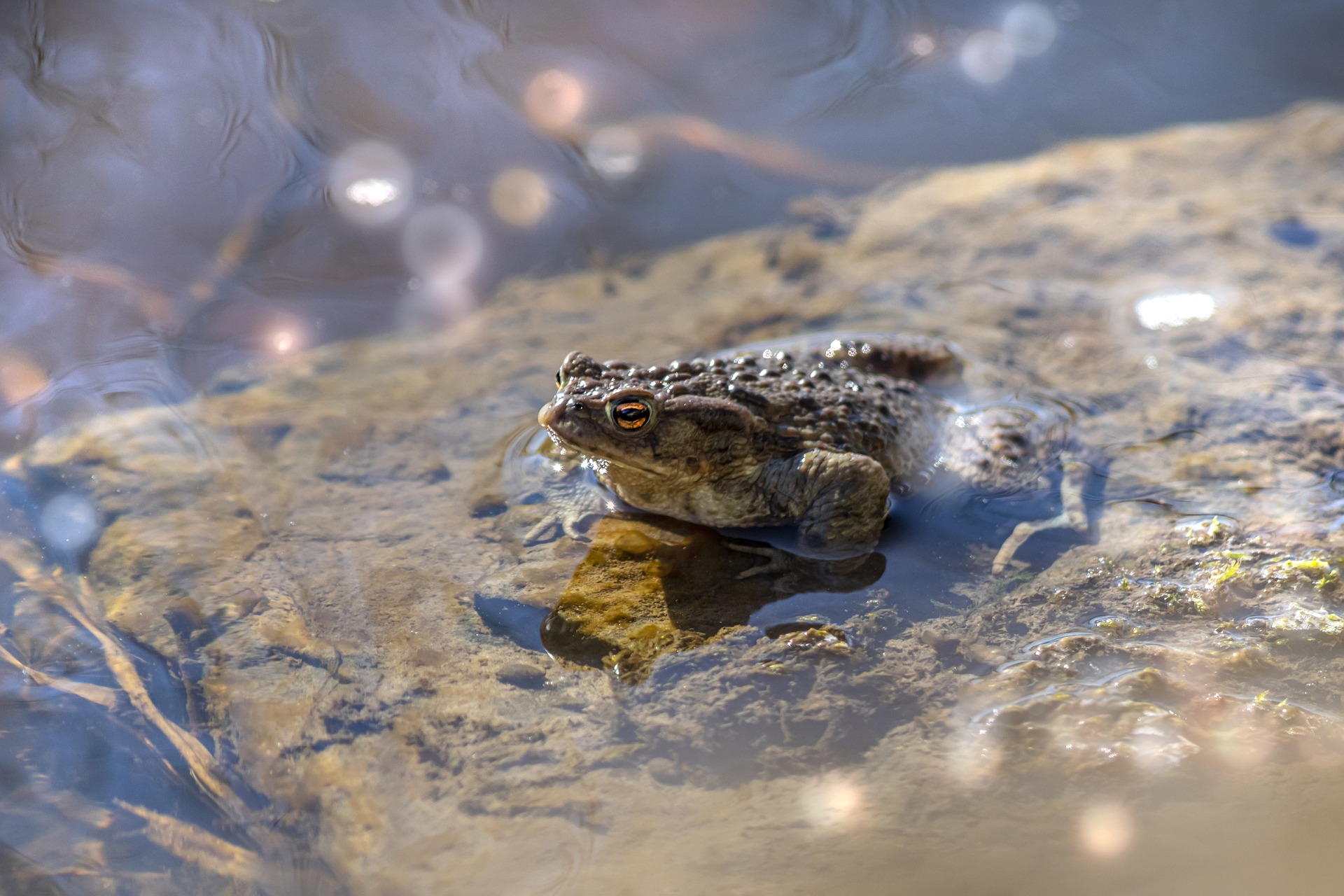The scientific name “(Bufo bufo)” refers to the Common Toad, a widespread amphibian species found throughout much of Europe, as well as parts of Asia. Here’s some information about the Common Toad:
- Physical Description: Common Toads typically have warty skin that can vary in color from olive green to brown or grey, often with darker markings. They have robust bodies, short legs, and distinctive parotoid glands behind their eyes, which secrete toxins as a defense mechanism. Adult Common Toads can reach lengths of up to 10 centimeters (4 inches).
- Habitat: Common Toads are adaptable and can be found in a variety of habitats, including woodlands, grasslands, gardens, and parks. They require access to freshwater breeding sites such as ponds, lakes, or slow-moving streams.
- Life Cycle: Like other amphibians, Common Toads undergo a complex life cycle that includes both aquatic and terrestrial stages. They breed in the spring, with males congregating at breeding sites and emitting a distinctive trilling call to attract females. After mating, females lay long strings of eggs in shallow water, which hatch into tadpoles within a few weeks. Tadpoles undergo metamorphosis, gradually developing into miniature versions of adult toads.
- Diet: Common Toads are opportunistic feeders and primarily consume a diet of insects, worms, slugs, and other invertebrates. They use their sticky tongues to capture prey, aided by their excellent sense of smell and sight.
- Defense Mechanisms: Common Toads possess several defense mechanisms to deter predators. Their warty skin and cryptic coloration help them blend into their surroundings, while their parotoid glands secrete toxic substances that can cause irritation or even be harmful to predators. When threatened, they may also inflate their bodies to appear larger or play dead to escape predation.
- Conservation: Although Common Toads are still relatively abundant in many parts of their range, they face threats from habitat loss, pollution, road mortality, and disease. Conservation efforts often focus on habitat preservation, creating wildlife corridors, and raising awareness about the importance of amphibians in ecosystems.
Overall, the Common Toad plays a significant role in maintaining balanced ecosystems and serves as an indicator species for the health of wetland habitats.
Views: 44
Subscribe to the newsletter:
